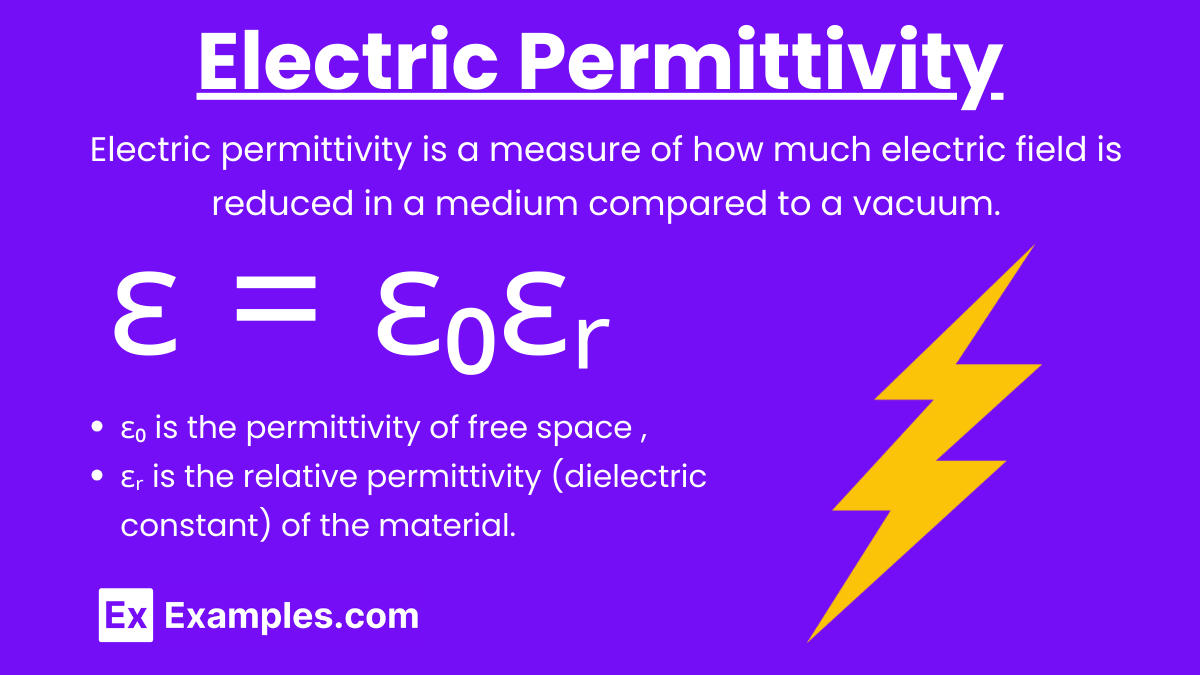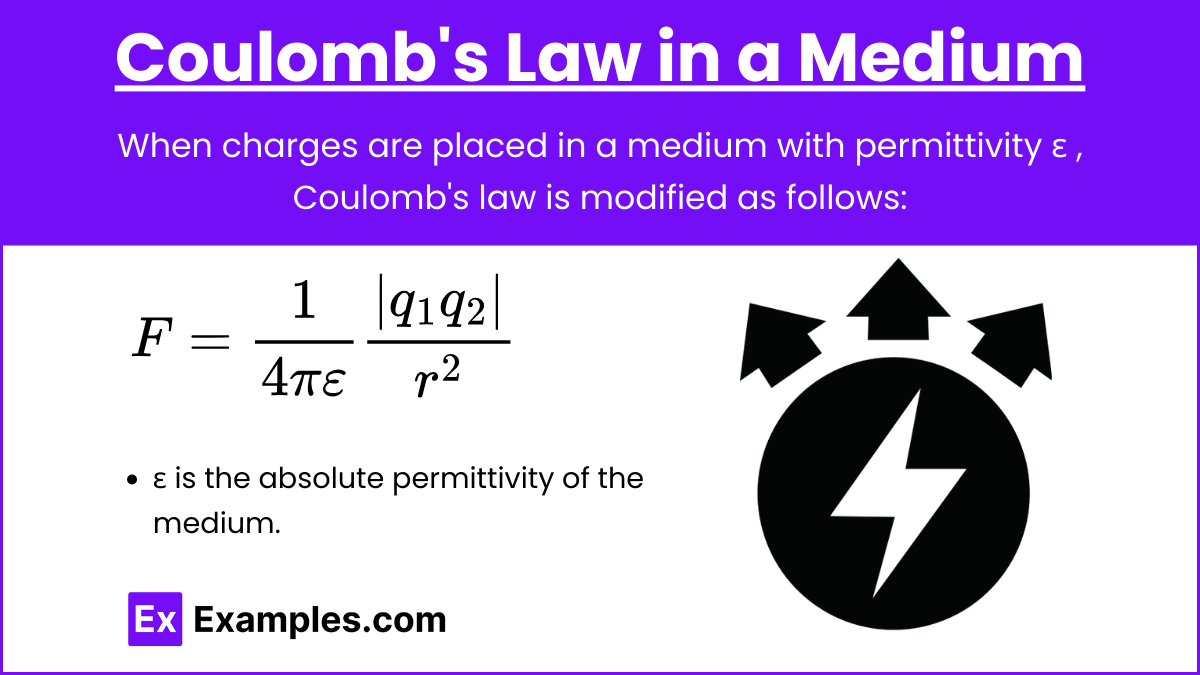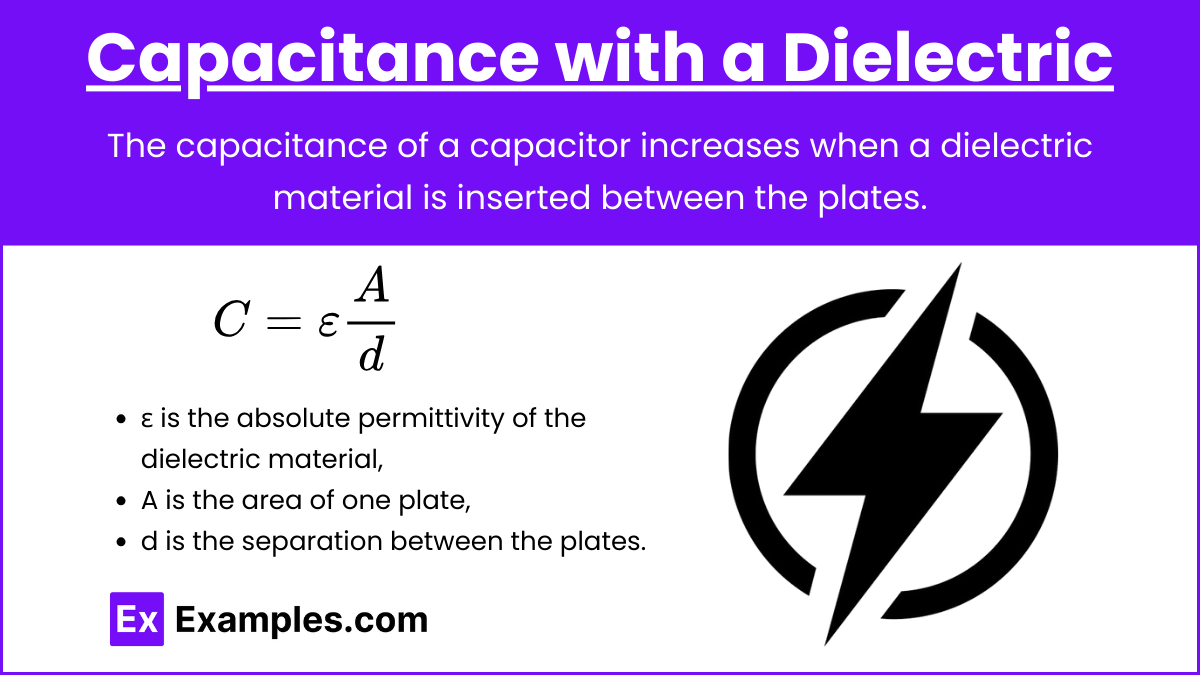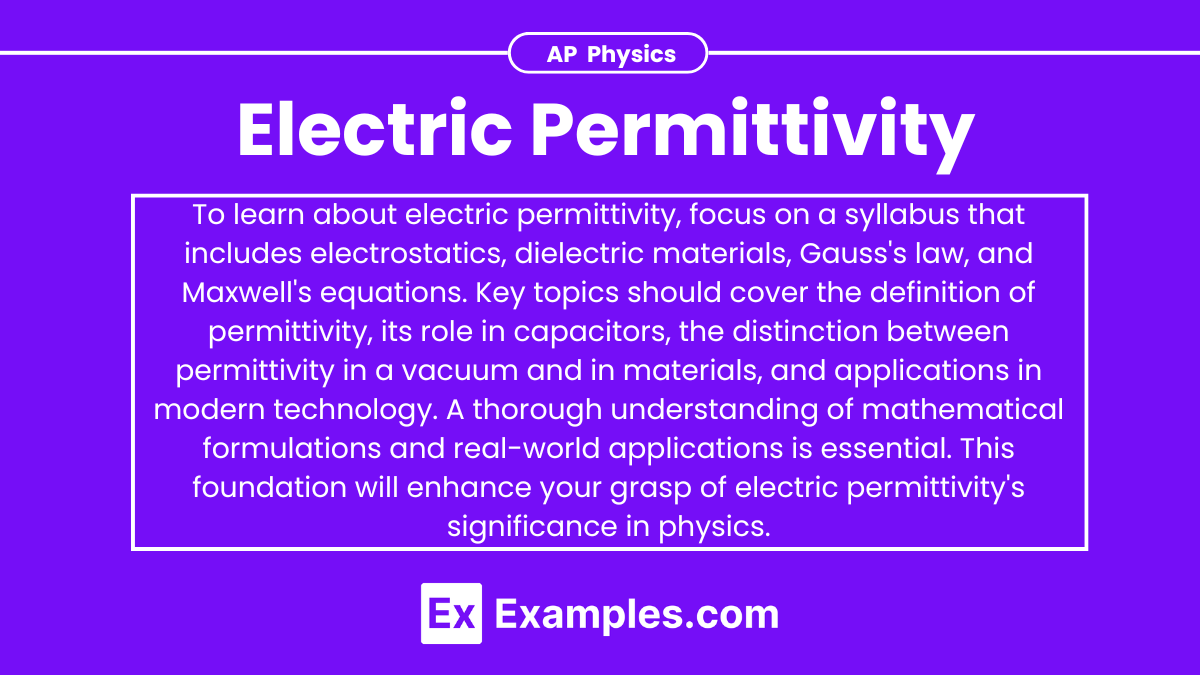Understanding electric permittivity is crucial for mastering the concepts of electrostatics and achieving a high score on the AP Physics exam. Electric permittivity is a fundamental property of materials that affects how electric fields interact with them. Below are detailed notes on electric permittivity along with five examples to help you excel in this topic.
Learning Objectives
Understand the concept of electric permittivity, its role in the formation and behavior of electric fields in different materials, and its relationship with electric susceptibility and dielectric constant. Learn to calculate permittivity in various scenarios, including parallel plate capacitors and different media. Explore how permittivity affects capacitance, the speed of electromagnetic waves in a medium, and energy storage in electric fields. Apply these principles to solve AP Physics exam problems involving electric fields and potential in dielectric materials.
Electric Permittivity

Electric Permittivity (ε): Electric permittivity is a measure of how much electric field is reduced in a medium compared to a vacuum. It determines how a material affects the electric force between charges placed in it.
Absolute Permittivity (ε): ε = ε₀εᵣ
where:
- ε₀ is the permittivity of free space (8.854×10⁻¹² F/m),
- εᵣ is the relative permittivity (dielectric constant) of the material.
Permittivity of Free Space (ε₀): ε₀ = 8.854×10⁻¹² F/m
Relative Permittivity (εᵣ): The relative permittivity (dielectric constant) is the ratio of the permittivity of a material to the permittivity of free space.
![]()
Key Points:
- Higher permittivity means the material can store more electric energy.
- Permittivity affects the capacitance of capacitors when a dielectric material is inserted between the plates.
Coulomb’s Law in a Medium

Coulomb’s Law in a Medium: When charges are placed in a medium with permittivity ε , Coulomb’s law is modified as follows:
![]()
where:
- ε is the absolute permittivity of the medium.
Capacitance with a Dielectric

Capacitance with a Dielectric: The capacitance of a capacitor increases when a dielectric material is inserted between the plates.
Formula:
![]()
where:
- ε is the absolute permittivity of the dielectric material,
- A is the area of one plate,
- d is the separation between the plates.
Relative Capacitance:
![]()
Example 1
Electric Force in a Medium
Scenario: Two charges, q₁ = +2μC and q₂ = −3μC, are placed 0.5 meters apart in a medium with relative permittivity εᵣ = 2.5. Calculate the electric force between them.
Solution:
![]()
![]()
![]()
![]()
![]()
Example 2
Capacitance with a Dielectric
Scenario: A parallel plate capacitor with plate area A = 0.01m² and separation d = 1mm is filled with a dielectric material with relative permittivity εᵣ = 4. Calculate the capacitance.
Solution:
![]()
![]()
![]()
![]()
![]()
Example 3
Effect of Dielectric on Capacitance
Scenario: A capacitor with capacitance 100pF is filled with a dielectric material, increasing its capacitance to 500pF. Calculate the relative permittivity of the dielectric.
Solution:
![]()
![]()
![]()
Example 4
Energy Stored in a Capacitor with a Dielectric
Scenario: A capacitor with capacitance 200pF is connected to a 10V battery. Calculate the energy stored in the capacitor when it is filled with a dielectric with relative permittivity εᵣ = 3.
Solution:
![]()
![]()
![]()
![]()
Example 5
Electric Field in a Dielectric Medium
Scenario: An electric field E₀ = 3×10⁵N/C exists in a vacuum. Calculate the electric field in a medium with relative permittivity εᵣ = 4.
Solution:
![]()
![]()
![]()
Practice Problems
Question 1
Which of the following statements correctly describes electric permittivity?
A) It is the measure of a material’s ability to conduct electricity.
B) It is the measure of a material’s ability to store electric charge.
C) It is the measure of a material’s ability to resist electric current.
D) It is the measure of a material’s ability to resist magnetic fields.
Answer: B) It is the measure of a material’s ability to store electric charge.
Explanation:
Electric permittivity, often denoted by ε, is a measure of how much electric field (E) is ‘permitted’ to pass through a material. In other words, it quantifies a material’s ability to store electric charge within an electric field. The higher the permittivity, the better the material can store electric charge.
Question 2
The permittivity of free space (vacuum) is represented by ε0. Which of the following is its approximate value?
A) 8.85×10⁻¹²F/m
B) 1.60×10⁻¹⁹C
C) 6.63×10⁻³⁴J\cdotps
D) 9.11×10⁻³¹kg
Answer: A) 8.85×10⁻¹²F/m
Explanation:
The permittivity of free space, ε₀, also known as the vacuum permittivity, is a fundamental physical constant. Its value is approximately 8.85×10⁻¹²farads per meter (F/m). This constant is used in various equations involving electric fields and capacitance.
Question 3
If a capacitor is filled with a dielectric material having a relative permittivity (εᵣ) of 4, what is the new capacitance if the original capacitance without the dielectric was C₀?
A) 0.25C₀
B) 0.5C₀
C) 4C₀
D) 8C₀
Answer: C) 4C₀
Explanation:
The capacitance of a capacitor with a dielectric material is given by:
C = εᵣC₀
where εᵣ is the relative permittivity of the dielectric material and C₀ is the original capacitance without the dielectric.
Given:
- εᵣ = 4
- C₀ = original capacitance
Therefore, the new capacitance C is:
C = 4×C₀ = 4C₀
Thus, the correct answer is 4 times the original capacitance, 4C₀.


